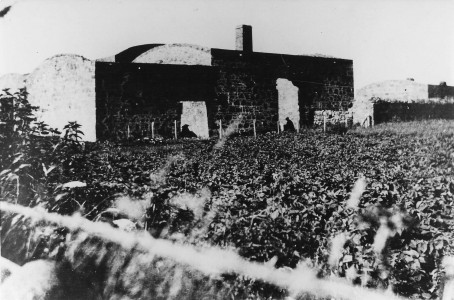The seaweed factory at Middleton
Photograph of the remains of the seaweed factory at Middleton.
Courtesy of Mr Donald MacKinnon
The kelp forests around Tiree are the fourth largest in Scottish waters. This abundance fuelled the seaweed industry on the island which, for a hundred years, produced alkali for soap and glass manufacture, and for bleaching linen.
Undercut by cheap foreign imports, the industry slumped from the 1830s until the 1860s when the North British Chemical Company appointed as manager a brilliant young chemist, Edward Curtis-Stanford. He arrived in Tiree in 1864 to supervise the building of the factory at Middleton, known locally as the Glassary.
Until 1901 the factory extracted iodine and alginates from the tangles, selling the residual charcoal as fertilizer and deodorants for earth closets, and using the gas produced by the process to light the buildings. Most of the factory was demolished in 1941 to provide the foundations of the runways built at the Reef for the RAF station.
Black and white photograph of the old seaweed factory at Middleton.
The old seaweed factory at Middleton in the early 20th century.










